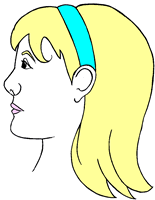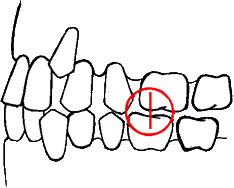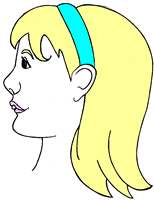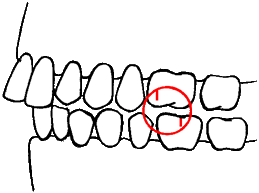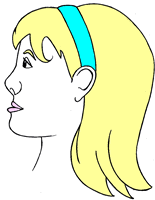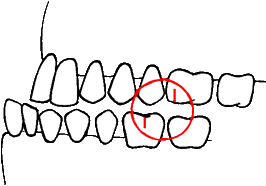| Malocclusion |
Mal - occlusion literally means "poor closing" or "bad bite." A bad bite can be caused by several factors:
Dental malocclusion
A dental malocclusion occurs when the teeth are not lined up properly, even though the jaws may be properly aligned.
|
|
|
|
Dental malocclusion caused by crowding |
|
Skeletal malocclusion
A skeletal malocclusion occurs when the upper and lower jaws don't line up correctly.
|
|
|
|
Overbite: Upper jaw protrudes or lower jaw recedes (or both). |
|
|
|
|
|
Underbite: Lower jaw protrudes. |
|
Bad Habits
Your teeth are not as fixed in place as you might think! Just as a constant breeze can cause a tree to grow at an angle, repetitive forces on your teeth can cause them to become "out of alignment."
- Thumbsucking can lead to an Open Bite.
- Tongue thrusting (pushing your tongue against your teeth) can slowly, but surely, move your teeth out of alignment.
- Fingernail biting, or habitually biting or chewing on most objects, can cause worn teeth.
- Mouth breathing: Breathing primarily through your mouth instead of your nose can dry out the tissues of your mouth leading to swollen and irritated gums. Also, the unnatural jaw alignment of mouth breathing creates and imbalance that can lead to a malocclusion. If mouth breathing is caused by blocked nasal passages, the obstruction must be corrected as well to prevent a relapse.
Grinding Teeth (Bruxism)
Severe cases of grinding teeth (bruxism) can also change the occlusion. Most people who grind their teeth do so in their sleep and therefore may be unaware of the problem.
Missing Teeth
Primary (baby) teeth that are prematurely lost due to decay or injury sometimes necessitate the use of a spacer to keep the surrounding teeth growing straight until the permanent tooth erupts to replace the missing tooth. If missing permanent teeth are not replaced with implants, a bridge, or a partial denture, the adjacent teeth can "tip" into the empty space and the opposing teeth can "super-erupt" meaning they grow longer than is natural.
Correcting a malocclusion
Of course, more than one of the above factors may be involved, so it is important to obtain a professional evaluation. Left untreated, a malocclusion not only affects the patient's appearance, it can also lead to TMJ problems and an increased risk of decay and gum disease.
Your dentist evaluates each individual case to determine the best course of action to prevent or cure the malocclusion.








